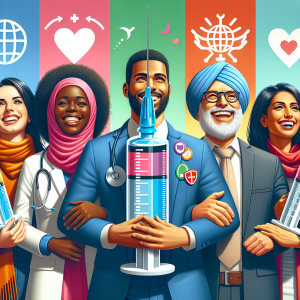
Global Water Crisis and Public Health: Urgent Need for Action
As our planet continues to grapple with the multifaceted impacts of climate change, one issue that stands out due to its profound impact on public health is the escalating global water crisis. Access to clean water is a fundamental human right, yet millions worldwide are facing severe shortages exacerbated by environmental shifts and inadequate infrastructure. This week, we explore the implications of this crisis on public health and the urgent actions needed to address it.
The Scope of the Crisis
According to a recent report by the United Nations, climate change has intensified water scarcity across the globe, particularly in regions where clean water access was already limited. Health emergencies linked to inadequate water and sanitation are on the rise, with vulnerable populations being the most affected. For instance, more than 118 million people in Europe alone live near healthcare facilities that lack basic sanitation.
Impact on Public Health
The lack of clean water directly correlates with increased disease transmission. Without proper sanitation, diseases such as cholera, dysentery, and various forms of diarrhea can spread more easily. Moreover, the situation exacerbates malnutrition, given the critical role of water in food production and hygiene. The World Health Organization has consistently highlighted the urgent need to rebuild and secure water and sanitation systems in affected areas.
Humanitarian Efforts and Challenges
Efforts to mitigate the water crisis have been spearheaded by numerous NGOs and international bodies. UNICEF’s recent campaign in the Gaza Strip aims to provide routine immunization and nutrition support to children cut off from essential services due to conflict. Yet, funding shortages continue to obstruct sustained progress. In Syria, the post-war recovery is at risk as funds for basic services are drying up, threatening the provision of clean water and sanitation.
Case Studies of Success and Strain
- Gaza: Despite a ceasefire, the health system remains in ruins. There’s a dire need for investment in rebuilding healthcare facilities and securing clean water supplies, as highlighted by the ceasefire update.
- Europe: While Europe has significant infrastructure in place, the increased frequency of droughts and floods poses new challenges. In some areas, the proximity of healthcare facilities to unsafe water sources poses additional risks.
A Call to Action
Immediate global action is imperative. Developed nations must increase their investment in water infrastructure and technology to support developing regions. Similarly, local initiatives that empower communities to maintain and secure their water systems are crucial. For instance, in Haiti, community-led initiatives have made significant strides in turning rabies outbreaks into public health awakenings, hinting at a similar potential for waterborne disease prevention.
The Role of Technology
Innovative technologies, such as AI, can offer new ways to manage and monitor water supplies effectively. Leveraging these tools could enhance the resilience of water infrastructure against climate-induced disruptions.
Conclusion
The global water crisis is more than an environmental issue; it’s a public health emergency that demands urgent and sustained action. With collective effort and strategic investment, we can mitigate the impacts and secure a healthier future for all.



